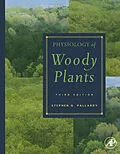Woody plants such as trees have a significant economic and climatic influence on global economies and ecologies. This completely revised classic book is an up-to-date synthesis of the intensive research devoted to woody plants published in the second edition, with additional important aspects from the authors' previous book, Growth Control in Woody Plants. Intended primarily as a reference for researchers, the interdisciplinary nature of the book makes it useful to a broad range of scientists and researchers from agroforesters, agronomists, and arborists to plant pathologists and soil scientists. This third edition provides crutial updates to many chapters, including: responses of plants to elevated CO2; the process and regulation of cambial growth; photoinhibition and photoprotection of photosynthesis; nitrogen metabolism and internal recycling, and more. Revised chapters focus on emerging discoveries of the patterns and processes of woody plant physiology.* The only book to provide recommendations for the use of specific management practices and experimental procedures and equipment*Updated coverage of nearly all topics of interest to woody plant physiologists* Extensive revisions of chapters relating to key processes in growth, photosynthesis, and water relations* More than 500 new references * Examples of molecular-level evidence incorporated in discussion of the role of expansion proteins in plant growth; mechanism of ATP production by coupling factor in photosynthesis; the role of cellulose synthase in cell wall construction; structure-function relationships for aquaporin proteins
Autorentext
Stephen Pallardy's research interests include the physiological responses of plants to water stress and comparative water relations, and the mechanisms by which seedlings of selected woody species and ecotypes are able to resist drought stress more effectively than others. The underlying motivation for that research included understanding how selective pressures that are associated with xeric habitats influence the evolution of drought adaptations among and within species and potential genetic improvements as a result.
Inhalt
Preface
Chapter 1: Introduction
Chapter 2: The Woody Plant Body
Chapter 3: Vegetative Growth
Chapter 4: Reproductive Growth
Chapter 5: Photosynthesis
Chapter 6: Enzymes, Energetics, and Respiration
Chapter 7: Carbohydrates
Chapter 8: Lipids, Terpenes, and Related Substances
Chapter 9: Nitrogen Metabolism
Chapter 10: Mineral Nutrition
Chapter 11: Absorption of Water and Ascent of Sap
Chapter 12: Transpiration and Plant Water Balance
Chapter 13: Plant Hormones and Other Signaling Molecules
Bibliography
Index
